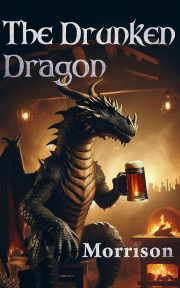Writing Alt-History? Read the Primary Sources
by Austin Conrad
Editor’s note: This piece is part of a rolling series, Writing from History, in which creators share professional insights related to the work of using historical elements in fictional prose.
Online media is my preferred starting point when seeking historical inspiration for my game writing—especially my recent fixation on King Arthur. If you use a discerning eye, the internet’s free resources are flush with useful information. For example, YouTube is home to many good documentaries that glean information from hard-to-access sources. Likewise, Wikipedia provides useful overviews and often detailed information. Even if the online encyclopedia is often maligned, it remains far superior to the ChatGPT hallucinations permeating search engines and “content” mills.
However, even high-quality secondary sources don’t present the joys, fears, and limits of people living through “history” firsthand. For a more immersive experience, writers of alt-history need to employ the vitality of primary sources.
Yet writers shouldn’t treat primary sources as gospel, either. Primary sources are a wonderful resource for internal perspective, which includes a culture’s own biases. Historiography—the way history is written—is also shaped by biases when reading primary sources. When writing alt-history, these biases can mislead, but they can also be an intriguing font of ideas.
Finding Primary Sources
Wikipedia’s bibliography section is helpful for exploring primary sources. Due to Wikipedia’s editorial requirements, the online encyclopedia’s citations and references often point directly to texts that are freely accessible from Project Gutenberg or the Internet Archive. While a crowd-sourced article shouldn’t be blindly trusted, Wikipedia’s citations are a reliable way to find primary and peer-reviewed sources.
When tracking down historical works not yet in the public domain, check if your local college or university offers free library cards to members of the community. In my own work, I’ve found this is the best way to access archaeological information about material culture, since accounts of excavations and other specialized publications are often prohibitively expensive. A library’s primary sources are most relevant when writing alt-history set during the last few centuries (for example, stories about vanquishing Nazi vampires). Many schools provide general access as part of community outreach. In-person shelf-skimming is valuable too, since the Library of Congress system uses precise topical organization.
The bibliography of a secondary source is also a strong tool for identifying primary sources. This tends to be how my own reading lists expand! Quality secondary sources rely upon direct citation of primary evidence during argument or analysis. Writers of alt-history should use these citations to immerse themselves in their period of interest.
Translation Woes
When evaluating non-English sources—so, most sources when writing alt-history fiction—you also need to consider how the translation impacts your primary source.
Two approaches to translating historical documents are prevalent:
- Direct translation
- Idiomatic translation
One isn’t necessarily better than the other. For example, Plato’s dialogues often contain ancient Greek puns. In some works—like the Cratylus—these plays on words constitute part of the argument! This situation is often confusing in direct translation. A translation that provides the “sense” of the primary source’s metaphors, colloquialisms, and puns may be more useful to the typical reader.
At the same time, the original phrasing can be a valuable resource for alt-history writers. Using contemporaneous metaphors adds historical verisimilitude to the story. Selecting a translation depends on the type of information you seek. For general historical perspectives, I find idiomatic translations more useful because they’re more readable while remaining descriptive of the emotions, opinions, and perspectives of the author. Direct translations are better when doing the work of writing once you’re already immersed and the prose will benefit from adopting the period’s figurative vocabulary.
Using Unreliable Sources
Hunting for a culture’s idiosyncratic phrases is also a good way to identify its biases. For example, the phrase “robbing Peter to pay Paul” contains Christian biases around religion, status, and debt. Note, too, that—as this example demonstrates—biases aren’t always negative. Rather, biases are often merely ways a person’s culture helps them frame and comprehend the world. Recognizing biases in a primary source refines alt-history fiction by strengthening the writer’s characterization of people from that culture.
Of course, not all biases are neutral. Diversify your primary sources, seeking a variety of authorial perspectives, to expose yourself to a variety of biases. This avoids accidental reliance on a negatively biased source. Comparing multiple primary sources also identifies which biases are specific to an author, and which more broadly characterize a culture.
When writing alt-history, recognize bias in your primary sources and don’t avoid using it in your own stories. Alt-histories can change quite a lot about a historical period. For example, if writing an alt-history set in a third century Roman Empire where Christianity never emerged, Christian ideas will not have any historical impact on indigenous Greco-Roman religious institutions, and Jewish culture will also appear differently. Cultural structures that developed from Christian thought ought to be avoided in such a story.
Apart from bias, some primary sources are just plain incorrect. In the Classical world this is embodied by Herodotus, who claimed in The Histories that Egypt has flying snakes and that ants mine gold in India. However, Herodotus also provides useful information about the wars between Greece and Persia, supported by archaeological investigation. How can accurate and inaccurate information be teased apart?
Trick question—we write speculative fiction, after all.
When building an alternative history from primary sources, the need for historical accuracy is context-dependent, as other articles in this series will address. Accuracy is useful for immersion, but accurate inaccuracy also immerses the reader. Continuing from Herodotus, in an alt-history novel about the Persian wars, the Greeks might attribute the Great King’s wealth to gold-digging ants. (By Hades, that could even be true!)
Because primary sources lack the historian’s benefit of hindsight, they’re often focused on details that seem unimportant to modern readers. Even our own past contains “foreign” biases that may seem alien—compare current attitudes about women to those prior to the triumph of the Women’s Rights movements throughout the 1900s. The foibles of primary sources are also why you should read them, and read deeply, while writing alt-history. Incorporating period attitudes and beliefs into a story allows your words to paint a bold picture on the canvas of history.
 Austin Conrad is a full-time writer and game designer best known for his indie RuneQuest publications. His work for other systems has been published by EN Publishing and Menagerie Press. Austin’s most recent release is “Treasures of Glorantha 2,” a compendium of magic items from an age of god-manipulating sorcerers and imperial dragons. You can learn more about Austin’s work on his website, akhelas.com.
Austin Conrad is a full-time writer and game designer best known for his indie RuneQuest publications. His work for other systems has been published by EN Publishing and Menagerie Press. Austin’s most recent release is “Treasures of Glorantha 2,” a compendium of magic items from an age of god-manipulating sorcerers and imperial dragons. You can learn more about Austin’s work on his website, akhelas.com.



